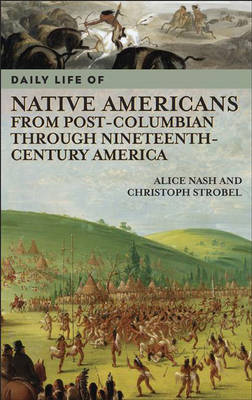Daily Life
2 total works
A detailed and engaging historical examination that provides an intimate understanding of the daily life of the new immigrants in the United States.
In the last decades, a growing number of immigrants from around the world have arrived in the United States. Daily Life of the New Americans: Immigration since 1965 provides a thematic overview of their everyday lives and underscores the diversity and complexity of the newcomer experience.
Organized into six thematic chapters, the book examines how immigrants from Latin America, Asia, Africa, the Middle East, and Europe are changing the face of the American nation, and, at the same time, are themselves being changed by living in America. The stories told here are enhanced through the use of oral histories that bring immigrant experiences vividly to life.
Daily Life of Native Americans from Post-Columbian through Nineteenth-Century America
by Alice Nash and Christoph Strobel
When Columbus discovered America in 1492, there were over five hundred indigenous groups living in what is now the United States. Despite the breathtaking diversity and inventiveness of these peoples, the culture, customs, and history of Native Americans are relatively unknown to many students and general readers today. In ten narrative chapters, organized by geographical region, Nash and Strobel examine the real history of Native Americans. How did Natives interact with European settlers? Did they really have pow-wows? Where did Indian children go to school? Did chiefs really wear feathered headdresses and smoke peace pipes? Dispelling the myths and stereotypes, the day-to-day lives of these tribes during a time of tremendous change is discussed. Chapters include details of daily life such as: clothing; colonization; education; farming & hunting; households & homes; leadership & political power; spirituality, rituals & customs; trade & alliance; warfare; women's & children's roles. Readers will learn the other history of indigenous people; not what is told in many history books, or seen in Hollywood movies and old westerns.
Greenwood's Daily Life through History series looks at the everyday lives of common people. This book will illuminate the lives of this indigenous group and provide a basis for further research. Black and white photographs, maps and charts are interspersed throughout the text to assist readers. Reference features include a timeline of historic events, sources for further reading, glossary of terms, bibliography and index.

